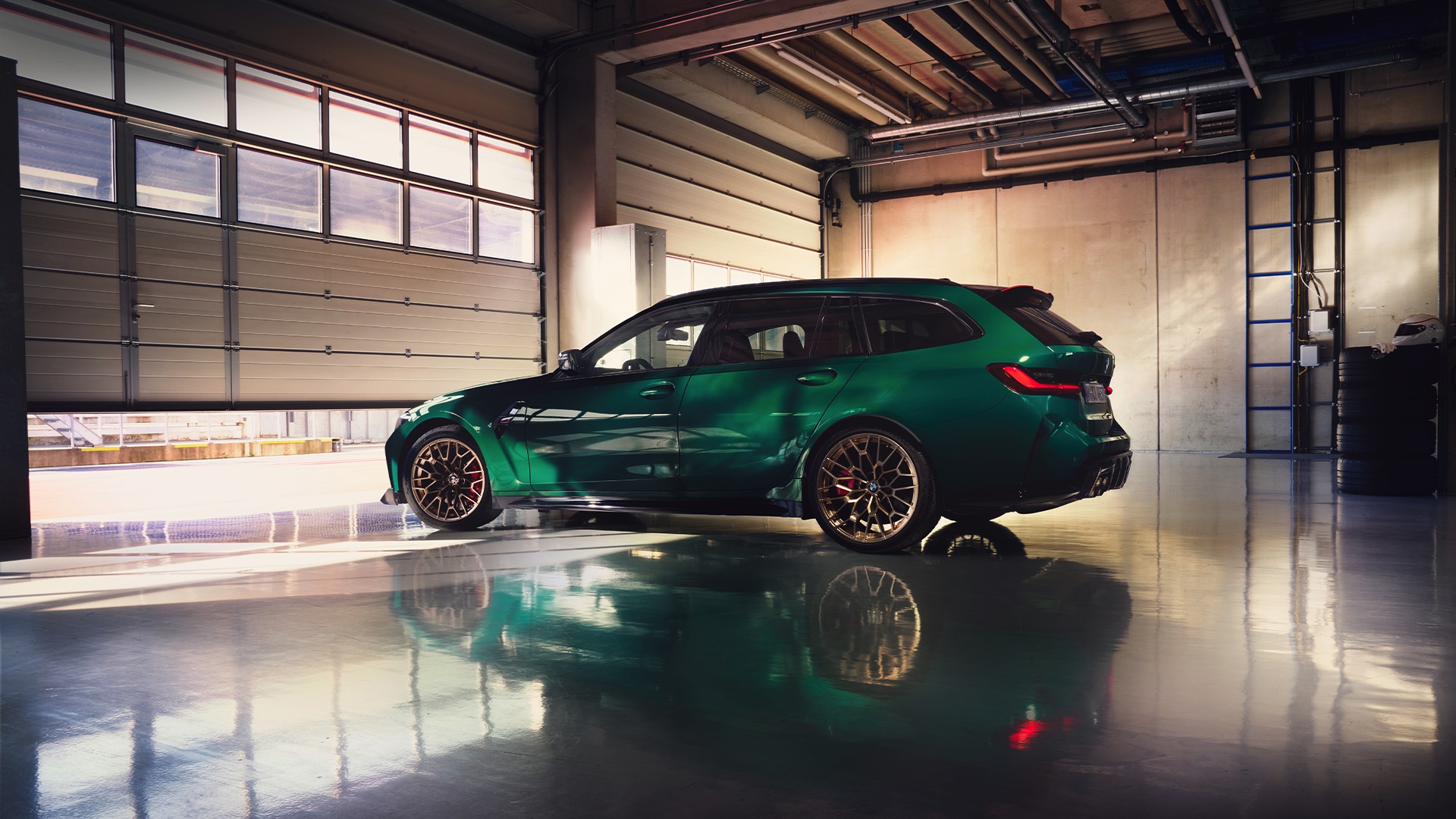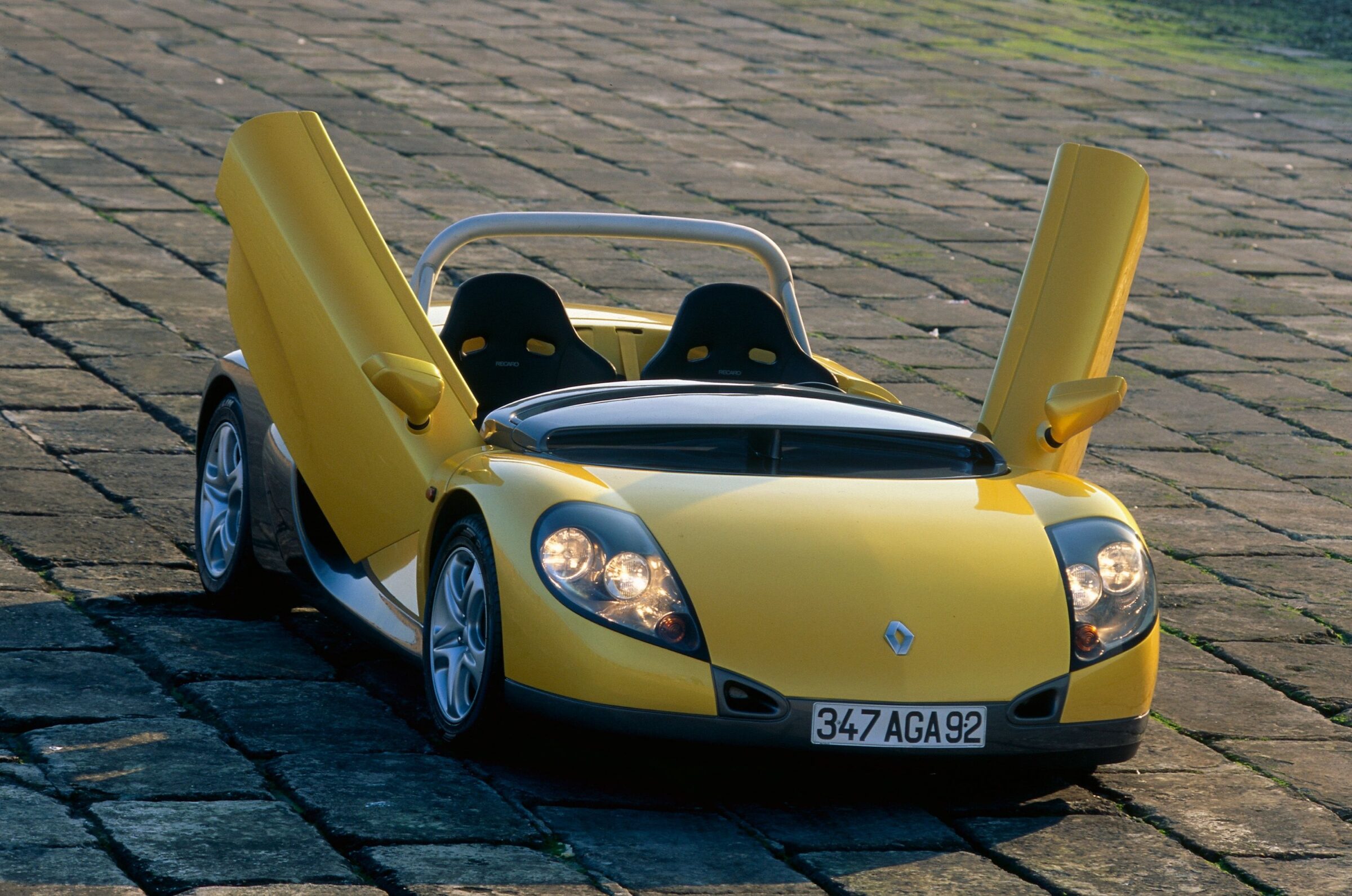Bugatti Type 57 SC Atlantic
Today sports cars are a normal part of daily street life. Of course, the more luxurious and expensive, the rarer the corresponding vehicles can be seen. But let’s turn the history books back about 80 years. In 1936, Europe is on the verge of another World War, and on the streets, if anything, normal family cars are rolling around. What kind of sensation was caused by special vehicles like Bugatti sports cars, you can hardly imagine today. At that time, the small manufactory in Molsheim built sports cars with the attributes elegant, sporty, luxurious and rare. On one model of that time, they are particularly true: the Type 57 SC Atlantic, which was only built four times.
Bugatti’s current president Stephan Winkelmann likes this first supercar in history: “The Atlantic is one of the icons of Bugatti’s rich history, and the Coupé was and remains unique in its elegance, quality and performance, a luxury sports car that inspires and obliges us. Our current hypercars Chiron, Chiron Sport and Divo are bringing this tradition into modern times – in the spirit of Bugatti.” Of the four produced Type 57 SC Atlantic three copies are still known today. They are among the most expensive automobiles in the world.
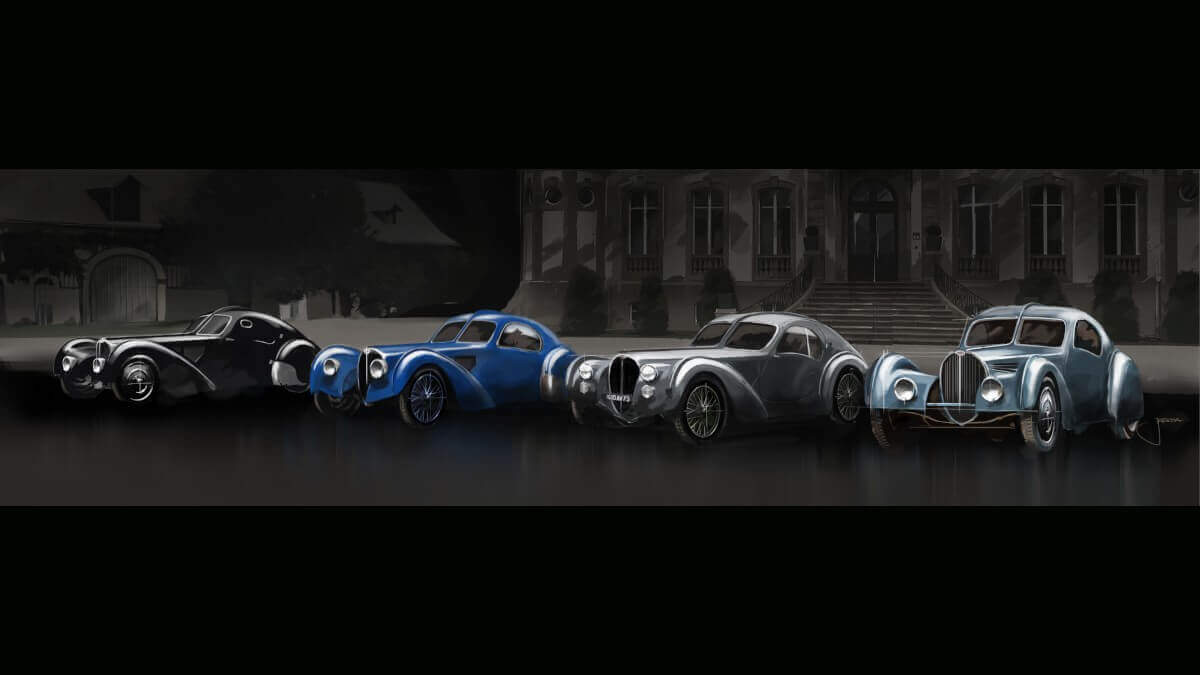

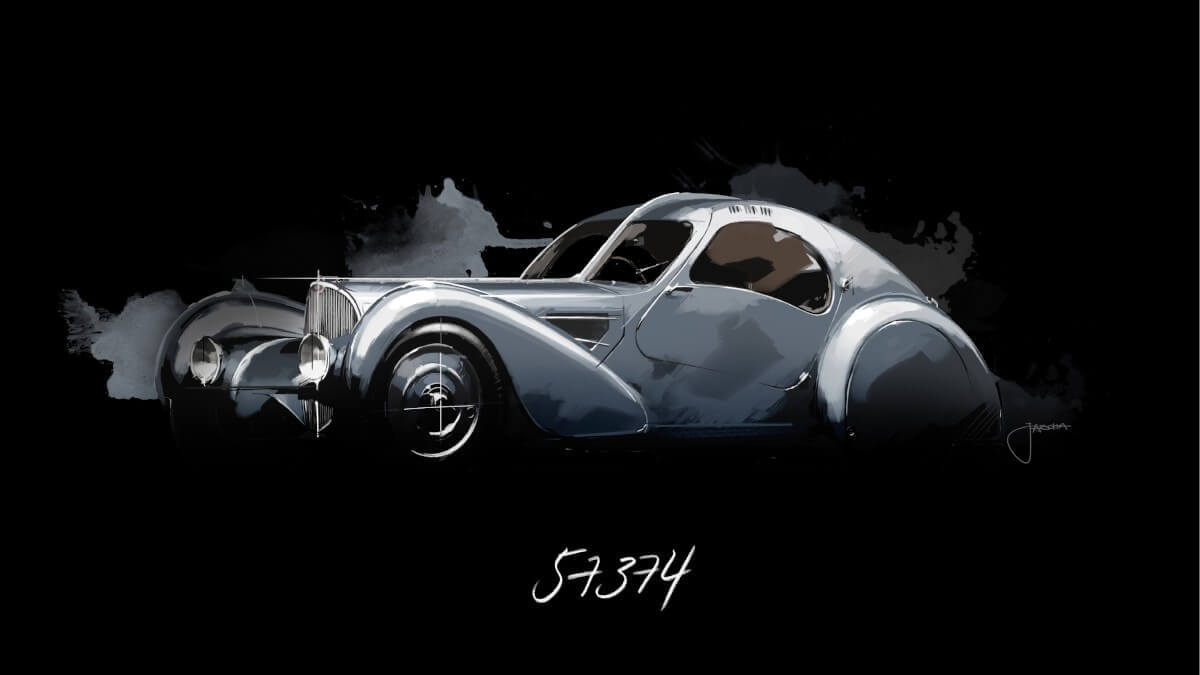

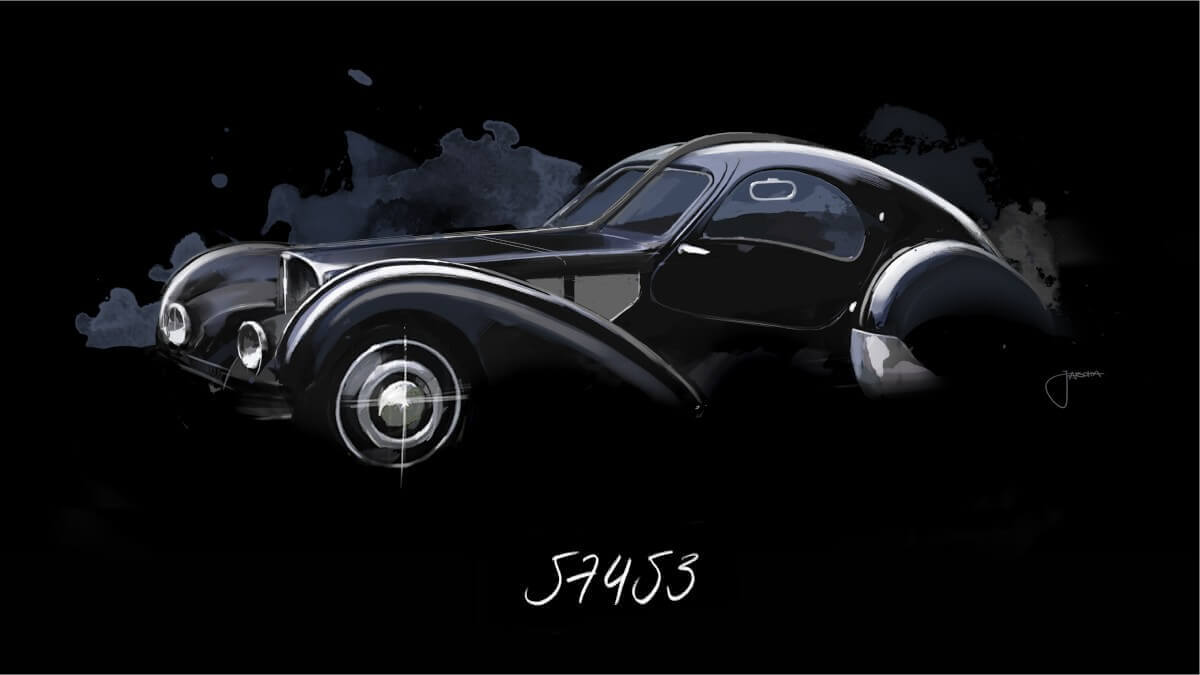

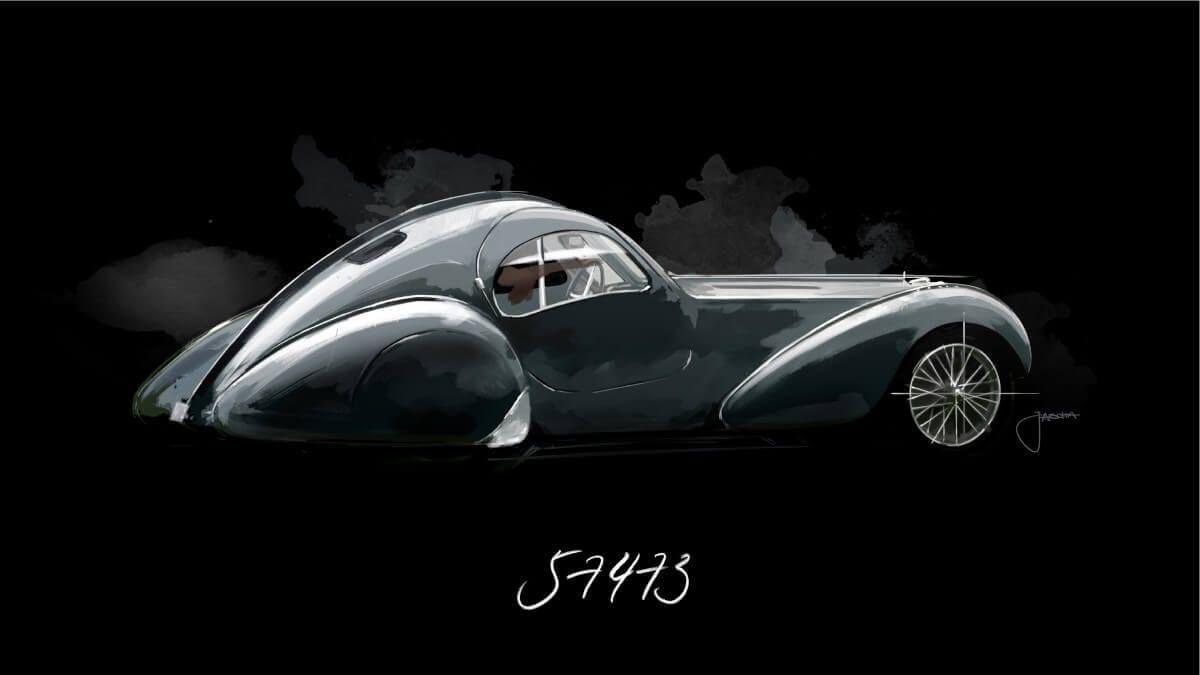

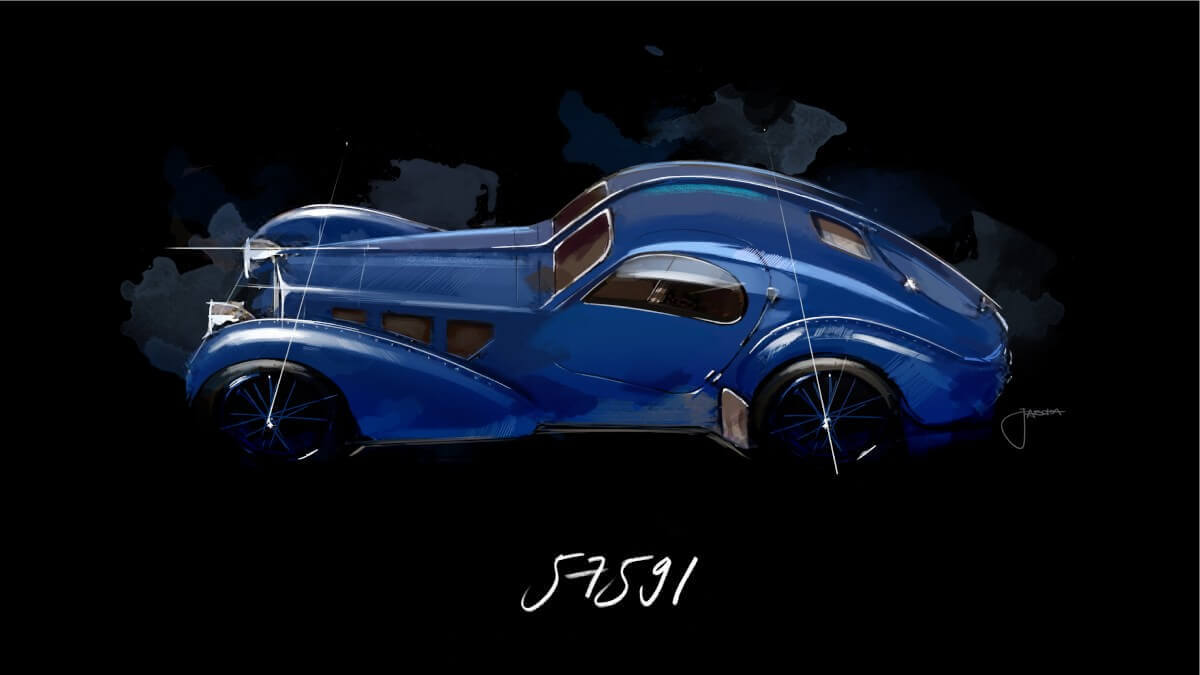

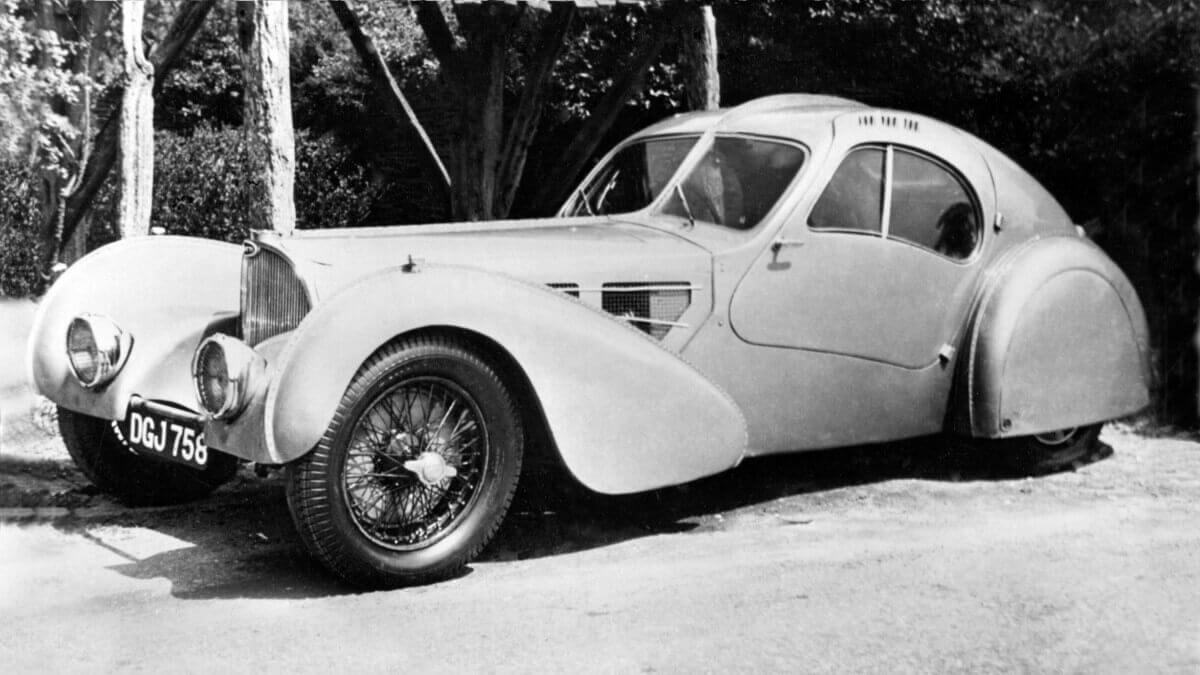



It all began with the development of a new sports car model, the Type 57, in which Jean Bugatti, the son of company founder Ettore Bugatti, put a lot of effort. Instead of the previous, widely branched model range, there should be a basic model with the possibility of various different bodyworks for road and racing. As body styles there were, for example, the Galibier (four-door sedan), the Stelvio (convertible), the Ventoux (two-door sedan) or the Atalante (coupé). Next to that decision the customer could choose between different power stages of the engine with or without supercharger. Until the end of production in 1940 about 800 copies of the Type 57 left the factory.
The Aérolithe (also referred to as ‘Coupé Speciale’ or ‘Aero Coupé’ in some sources), which is considered to be lost today, remained an absolute one-off model. Its streamlined bodywork was made of the aircraft sheet metal electron, which is an alloy of magnesium and aluminium. Due to the difficult processing technology that was necessary for this material, Bugatti decided for the use of normal aluminium for the low-volume production of the Aérolithe-inspired Type 57 Atlantic. Of the four copies, one remained in the factory. The name came from the multiple crossings of the Southern Atlantic by mail plane pilot Jean Mermoz, a close friend of Jean Bugatti. Visually, many elements of the one-off have been preserved, such as the rivetted raised seam running vertically from the hinge in the split bonnet to the tail or the oval shape extending almost to the ground. At the Atlantic, six exhaust tips are visible under the rear body. Each of the four vehicles differs from the other ones. Sometimes the headlights are integrated into the front fenders, sometimes they stand free. Under the bonnet lies a straight-eight cylinder engine with 200 hp from 3.3 liters.
The first copy, chassis number 57 374, went to British banker and baron Nathaniel Mayer Victor Rothschild in 1936, who sent it back to the factory three years later to retrofit a supercharger. Today it is shown on permanent loan at the Mullin Automotive Museum in Oxnard/California. Jean Bugatti designed the second car, chassis number 57 453, in black according to his own wishes and put the car on various car shows. Since the invasion of the German Wehrmacht in Alsace, the whereabouts of this car are unknown. Chassis 57 473 was made for the Frenchman Jacques Holzschuh, who shortly after delivery sent the car to the coachbuilding company of Joseph Figoni for some changes. A later owner died in the car during an accident at a railroad crossing in 1955. The wrecked Atlantic was carefully restored some decades later. Fashion designer Ralph Lauren today owns the fourth copy, chassis number 57 591, which was built in 1938 for the British R.B. Pope. Should 57 453 ever reappear and be restored, experts expect a value in the range of 100 million euros.
Bilder: Bugatti



